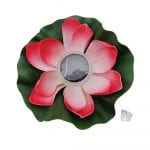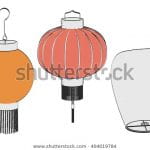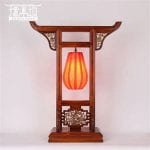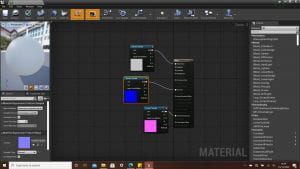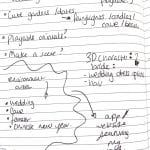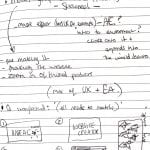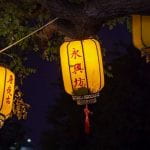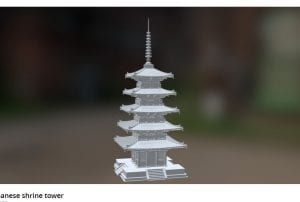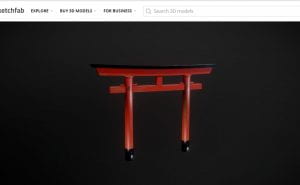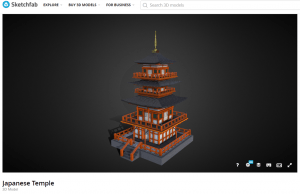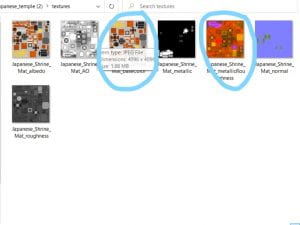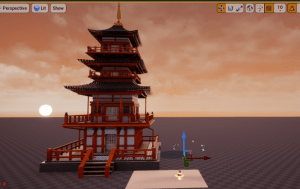Blender. 2019. First Steps – Blender 2.80 Fundamentals. [Video]. Available at: https://youtu.be/MF1qEhBSfq4?list=PLa1F2ddGya_-UvuAqHAksYnB0qL9yWDO6 [Accessed 7th Nov].
Březík, Tomáš. 2019. Japanese shrine. [Article] Available at: https://www.artstation.com/artwork/e0wwdG [Accessed 28th Oct].
Brisnehan, James. 2020. Creating a Festive Italian Village in UE4. [Article] Available at: https://80.lv/articles/creating-a-festive-italian-village-in-ue4/ [Accessed 28th Oct].
Cirillo, Marco. 2017. Practical Fingerstyle #1 Spanish Dance – Easy Spanish Melody for Beginners. [Video] Available from: Practical Fingerstyle #1 Spanish Dance – Easy Spanish Melody for Beginners – YouTube [Accessed 18th Nov].
DigitalTris. 2020. Realistic Forest Pack. Unreal Engine. Available at: https://www.unrealengine.com/marketplace/en-US/item/e09224763bef418ca376f4403362e8cc [Accessed 16th Dec].
Effects, Octopus. 2020. Learn Blender with me 9 – Create 3D model of Champa flower – 163. [Video]. Available from: https://youtu.be/8QBLXRJTcQg [Accessed 1st Nov].
Galaxxxy. 2018. Japanese Temple. Sketchfab. Available from: https://sketchfab.com/3d-models/japanese-temple-5917e267ca3e48ac8a27f9ec5809fc29 [Accessed 11th Dec].
Gamefromscratch. 2019. Unreal Engine Procedural Nature Pack (+Good Skys) In Action — Now Free! [Video] Available from:https://youtu.be/jN9D5H-cQIY [Accessed 20th Dec].
Garth, Joe. 2019. Free Brushify – Environment Shaders Pack. [Article] 80LV. Available from: Free Brushify Environment Shaders Pack (80.lv) [Accessed 21st Dec].
Gregory, Paige. 2019. Paige Gregory Digital Media Project 2. [Blog] Available at: https://med2024m-1920-digitalmediaproject23.coursework.lincoln.ac.uk/ [Accessed 18th Nov].
Gregory, Paige. 2019. Software/ Hardware Review: Auto Materials and Alpha Masks (Brushify). [Blog post] Available at: https://med2024m-1920-digitalmediaproject23.coursework.lincoln.ac.uk/2020/03/20/auto-materials-and-alpha-masks-brushify/ [Accessed 21st Dec].
Gregory, Paige. 2019. Software/ Hardware Review: World Machine/ UE4. [Blog post] Available at: Software/ Hardware Review: World Machine/ UE4 – PAIGE GREGORY DIGITAL MEDIA PROJECT 2 (lincoln.ac.uk) [Accessed 21st Dec].
Guru, Blender. 2020. Blender Beginner Modelling Tutorial – Part 1. [Video] Available at: https://youtu.be/Hf2esGA7vCc [Accessed 1st Nov].
Harle, Thomas. 2016. Water Materials. [Video] Available from: https://vimeo.com/188064110 [Accessed 18th Nov].
Holmes, Jon. 2019. CG Texturing Workflow. Available from: https://spark.adobe.com/page/d5tNUfgdXieo3/ [Accessed 7th Nov].
Jayanam. 2020. Substance Painter PBR Materials To UE4. [Video] Available from: https://youtu.be/JMivdSYTUo8 [Accessed 18th Nov].
Kaisellgren. 2016. How to use diffuse, height and albedo maps? Unreal Engine. Available at: https://answers.unrealengine.com/questions/515755/how-to-use-diffuse-height-and-albedo-maps.html [Accessed 20th Dec].
Kensaku. 2015. Japanese shrine tower. Sketchfab. Available from: https://sketchfab.com/3d-models/japanese-shrine-tower-e32f6547bb8d4479b90700d6d167829a [Accessed 10th Dec].
Lile, Darrin. 2016. Sculpting a Game Asset in Blender. Available at: https://www.linkedin.com/learning-login/share?forceAccount=false&redirect=https%3A%2F%2Fwww.linkedin.com%2Flearning%2Fsculpting-a-game-asset-in-blender%3Ftrk%3Dshare_ent_url&account=42436980 [Accessed 1st Nov].
Marshall, Warren. 2018. Arch Vis Polish Pack #2. Unreal Engine. Available at: https://www.unrealengine.com/marketplace/en-US/item/243ede3562a94ca99cf8bdc82d659587 [Accessed 6th Dec].
Megascans, Quixel. Megascans Goddess Temple. Unreal Engine. Available at: https://www.unrealengine.com/marketplace/en-US/item/f13bbc0c52ae42d595cd9c23fe605372 [Accessed 7th Dec].
Pathak, Jainesh. 2018. Japanese Temple. Sketchfab. Available at: https://sketchfab.com/3d-models/japanese-temple-a210febbec4f454dbd0df1d142be06bc [Accessed 10th Dec].
PlayStation. 2020. Ghost of Tsushima – A Storm is Coming Trailer | PS4. [Video] Available at: https://www.youtube.com/watch?v=RcWk08PBe7k [Accessed 28th Oct].
Protofactor Inc. 2018. Animal Variety Pack. Unreal Engine. Available at: https://www.unrealengine.com/marketplace/en-US/item/c661d0a956454ea4ba6d12c09a687406 [Accessed 3rd Nov].
PurePolygons. 2019. Procedural Nature Pack Vol.1. Unreal Engine. Available at: https://www.unrealengine.com/marketplace/en-US/item/3ac3264f11074097a888330e09d95968 [Accessed 3rd Nov].
Rzatkowski, Adam. 2020. Operation Claymore: Complete Workflow for an UE4 Scene. [Article] Available at: https://80.lv/articles/operation-claymore-complete-workflow-for-an-ue4-scene/ [Accessed 28th Oct].
SilverTm. 2020. Nature Package. Unreal Engine. Available at: https://www.unrealengine.com/marketplace/en-US/item/83513a07b2d947ef903075d3fd3edf69 [Accessed 14th Dec].
Studios, Treefort. 2019. Speed Environment – Winter Forest Cabin – Unreal Engine 4. [Video] Available at: https://www.youtube.com/watch?v=ofE0EZlP0I4 [Accessed 28th Oct].
Substance by Adobe. 2018. Substance Academy Series: Getting Started with Substance Painter. [Video] Available from: https://youtu.be/IGGQl9kVB1M?list=PLB0wXHrWAmCwnqWfKdGEmbtSKN2EzvLrY [Accessed 18th Nov].
Tharlevfx. 2018. Water Materials. Unreal Engine. Available at: https://www.unrealengine.com/marketplace/en-US/item/2ed5823f48fe41b5ae826841fe11b023 [Accessed 14th Dec].
Tirido. 2017. Scanned Poplar and Aspen Forest with Seasons. Unreal Engine. Available at: https://www.unrealengine.com/marketplace/en-US/item/c080b7986e6b46968fa4f97b50bafebc [Accessed 17th Dec].
Unreal Engine. 2018. Volumetric Fog and Lighting in Unreal Engine 4 | GDC 2018 | Unreal Engine. [Video] Available at: https://youtu.be/Xd7-rTzfmCo [Accessed 18th Nov].
Unreal Engine. 2020. Building natural environments in Unreal Engine. [Video] Available from: https://youtu.be/gbj1qgPOl3E [Accessed 18th Nov].
Virmani, Sahir. 2018. Japanese Torii Gate. Sketchfab. Available at: https://sketchfab.com/3d-models/japanese-torii-gate-2027a248de1b4b70985ff97e708fb50d [Accessed 11th Dec].



